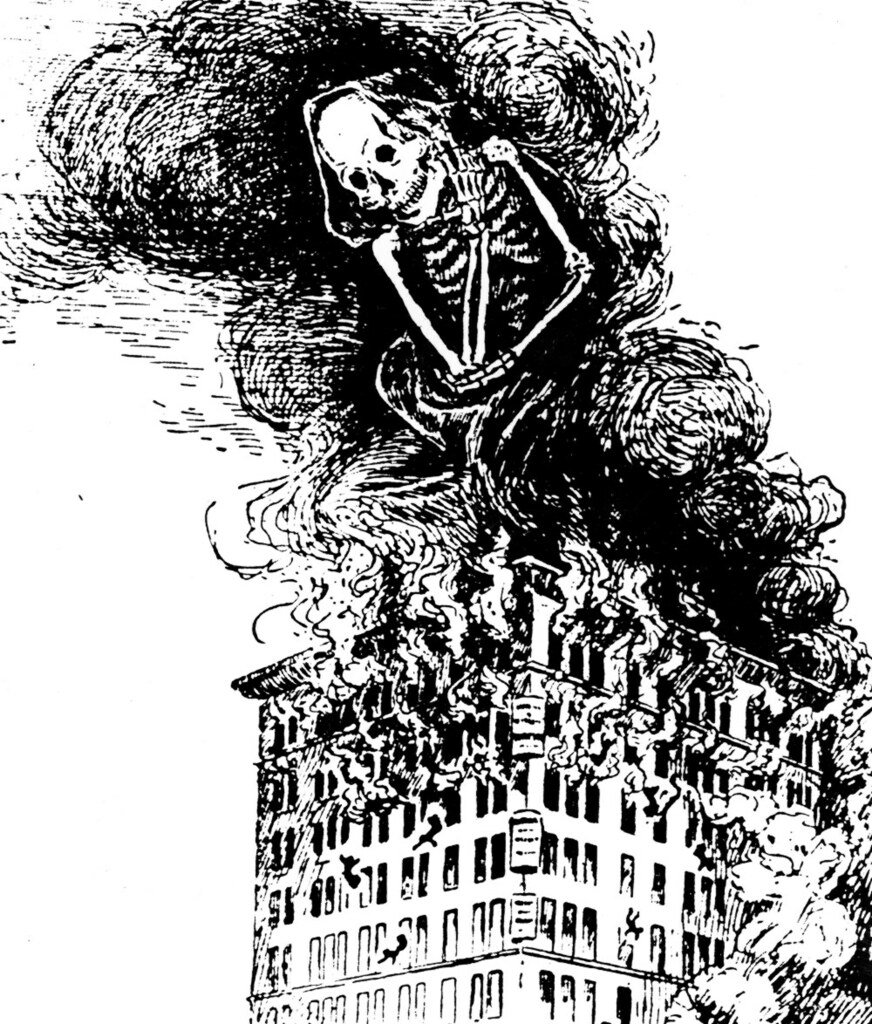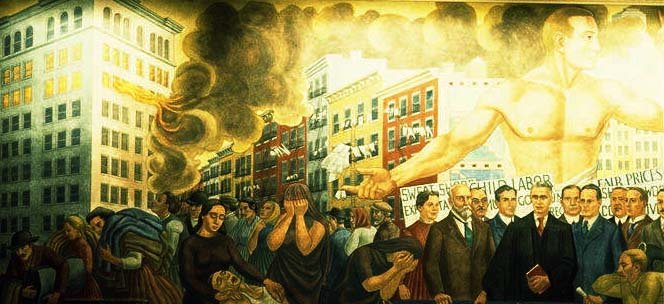Women from the ILGWU Upper South Department waving from among decorated cars with placards. International Ladies Garment Workers Union Photographs (1885-1985) The Kheel Center for Labor-Management Documentation and Archives in the ILR School at Cornell University
The ILGWU, once one of the largest labor unions in the United States, had primarily female membership. When this photo was taken (1950s) most of what was available to wear in the U.S. was made in the U.S., from the raw materials to the textile, design and finished product. Union tags on items let you know that fairly paid garment workers made the items.
Although not every union-made garment still has or ever had the label, I always search for a union labels in vintage clothing, and always photograph them. They make me happy. They also clue us in on the era of their construction. I have yet to find a shoddily sewn garment with a union label—I don’t think anything poorly made would pass muster.
A manufacturer and the Union Price Committee examine garments to estimate the work involved as a basis for piece rates. International Ladies Garment Workers Union Photographs (1885-1985) The Kheel Center for Labor-Management Documentation and Archives in the ILR School at Cornell University
The labor movement achieved the abolition of child labor, the establishment of the eight-hour workday, the introduction of weekends, the creation of Medicare, and enhancements to workplace safety. These advancements have benefitted all employees, even those without union representation.
What else is there to love about the garment unions? They had basketball teams, bowling leagues, choruses, advanced education classes and ESL classes. They raised money to help those in need. They were remarkably integrated. Their families understood what garment manufacturing meant and didn’t want to see a lesser product. Women had major power in garment unions, and could picket for better conditions and better pay.
ILGWU Local 22 plays ILGWU Local 91, November 6, 1937. International Ladies Garment Workers Union Photographs (1885-1985) The Kheel Center for Labor-Management Documentation and Archives in the ILR School at Cornell University
Up until the 1960s, a couple of unions—the Amalgamated Clothing Workers Union and the International Ladies Garment Workers Union—were the primary representatives of the country's garment workers. Due to their successful organizing efforts, these unions helped transition workers from exploitative sweatshop conditions to stable middle-class livelihoods.
Consumers were encouraged to actively seek out clothing with union labels, assuring them that their purchases were made in humane working environments by employees who had a genuine say in their work conditions. At that time, it was entirely feasible to outfit oneself with a wardrobe composed solely of union-made apparel for men, women, and children as most clothing available in American stores was manufactured locally by union members.
However, this is no longer the case. In the 1970s, prominent U.S. clothing manufacturers relocated production to non-union factories in the South, and by the 1980s, they had transferred operations to sweatshops in Asia, Mexico and Central America. Presently, the majority of garments sold in American retail outlets—including major retailers such as Walmart, Target and Nordstrom—are produced overseas, where laborers often face dire working conditions and limited rights.
Public Domain
Until more clothing is once again made ethically (I have hope, with a new wave of caring consumers), vintage clothing with union labels will remain a symbol of what was—and could be again.





























